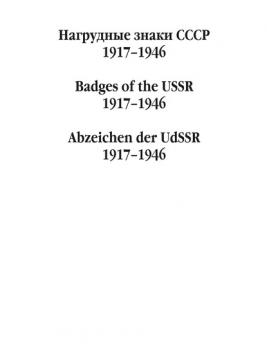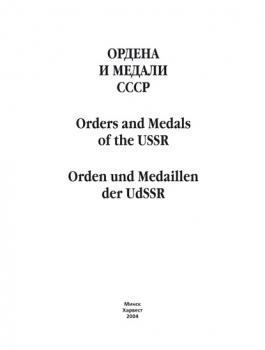Группа авторов
Список книг автора Группа авторовЗагадки, дразнилки
В книге собраны всевозможные лучшие примеры детского фольклора – загадки и дразнилки. Фольклор, тысячелетний опыт которого отобрал самые естественные и необходимые формы развития речи, образною мышления, музыкальных способностей, формирования трудовых навыков, – это одна из составляющих воспитания ребенка. Издание хорошо иллюстрировано.
Скороговорки и заклички
В книге собраны всевозможные лучшие примеры детского фольклора – скороговорки и заклички. Фольклор, тысячелетний опыт которого отобрал самые естественные и необходимые формы развития речи, образного мышления, музыкальных способностей, формирования трудовых навыков, – это одна из составляющих воспитания ребенка. Издание хорошо иллюстрировано.
Прибаутки, приговорки
В книге собраны всевозможные лучшие примеры детского фольклора – приговорки и прибаутки. Фольклор, тысячелетний опыт которого отобрал самые естественные и необходимые формы развития речи, образного мышления, музыкальных способностей, формирования трудовых навыков, – это одна из составляющих воспитания ребенка. Издание хорошо иллюстрировано.
Колыбельные песни, пестушки
Первые годы жизни ребенка – это то время, когда наибольшее значение для развития мышления малыша имеет обращенный к нему материнский фольклор: колыбельные песни и пестушки. Ведь фольклор, тысячелетний опыт которого отобрал самые естественные и необходимые формы развития речи, образного мышления, музыкальных способностей, приобретения трудовых навыков, – это одна из составляющих воспитания ребенка. Издание хорошо иллюстрировано.
Первые железные дороги России
Альбом представляет раннюю историю первых российских железных дорог – Царскосельской, Петербург-Московской (Николаевской) и Белорусской – в изобразительной форме. Все иллюстрации выполнены на основе исторического материала и свидетельств участников событий. Помимо сюжета, вы сможете увидеть изображения исторических личностей, железной техники, архитектурных сооружений того времени. Издание для широкого круга читателей.
Холодные закуски
У вас в руках настоящая энциклопедия рецептов для тех, кто хотел бы из простых и доступных продуктов приготовить вкусные закуски. В книге приведены рецепты закусок из мяса, овощей, яиц, сыра, грибов, рыбы и морепродуктов; широко представлен ассортимент заливных блюд и закусочных паштетов, а также соусов к холодным блюдам на каждый день и к торжественному случаю. Кроме того, в издании вы найдете маленькие кулинарные хитрости, которые могут пригодиться как начинающему, так и опытному кулинару.
Нагрудные и памятные знаки России
Предлагаемое вашему вниманию издание представляет собой иллюстрированный каталог нагрудных знаков Российской империи. Основная задача настоящего издания – на основе архивных источников дать полное, систематическое научное описание нагрудных знаков. Рассмотрены знаки всех типов учебных заведений, как гражданских, так и военных, знаки благотворительных организаций, государственных и духовных учреждений, разных обществ, союзов, комитетов всех направлений, а также юбилейные и памятные знаки. Приводится изображение для каждого знака, его описание и дата учреждения. Данное издание станет незаменимым справочником для коллекционеров и специалистов по фалеристике, а также отличным подарком для всех, кто увлекается историей Отечества.
Нагрудные полковые знаки России
Предлагаемое Вашему вниманию издание представляет собой попытку создания полного каталога нагрудных полковых наград Российской Империи. Для каждого знака дано изображение и описание, дата учреждения, правила награждения и ношения. Знаки в каталоге расположены не в хронологической последовательности их утверждения, а по принципу построения русской армии. Сначала описываются знаки гвардейских полков, императорской свиты и конвоя, затем – пехотных стрелковых, кавалерийских, артиллерийских частей, гвардейских, гренадерских полков и т. д. Издание будет интересно как для любителей, интересующихся фалеристикой, так и для профессионалов.
Нагрудные знаки СССР. 1917–1946
Предлагаемое вашему вниманию издание представляет собой попытку создания полного каталога нагрудных знаков и жетонов, выпущенных в СССР в 1917–1946 гг. В книге описаны знаки, учрежденные народными комиссариатами, а также знаки различных добровольных обществ, ведомственных, профессиональных, учебных, творческих организаций, союзов и клубов. Широко представлены и знаки наградные – для победителей в социалистическом соревновании или же за достижения в спорте, юбилейные, памятные и сувенирные. Для каждого знака приводится его полное описание, цветное изображение аверса, дата учреждения, материал для его изготовления. Данное издание станет незаменимым справочником для коллекционеров, сотрудников музеев и специалистов по фалеристике, а также отличным подарком для всех, кто увлекается историей Отечества.
Ордена и медали СССР
Предлагаемое вашему вниманию издание представляет собой попытку создания полного каталога орденов и медалей СССР – государственных наград и знаков отличия, которыми награждались за особые заслуги и достижения в разных областях социалистического строительства и обороны страны как отдельные граждане, так и коллективы трудящихся, учебные заведения, театры и киностудии, газеты и журналы, советские республики, области, города, а также воинские части и корабли Вооруженных сил СССР. Книга содержит сведения о наградной системе СССР, данные из истории учреждения орденов и медалей. Для каждого знака дано изображение аверса, орденских лент, их описание, дата учреждения, материал для изготовления. В фотоальбоме представлены уникальные документы: орденские книжки награжденных орденами, удостоверения к соответствующим медалям. Данное издание станет незаменимым справочником для коллекционеров и специалистов по фалеристике, а также отличным подарком для всех, кто увлекается историей Отечества.









